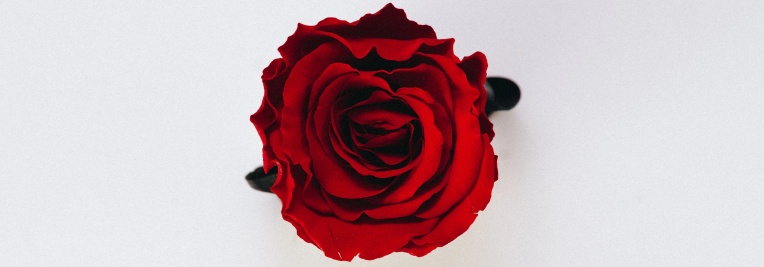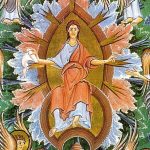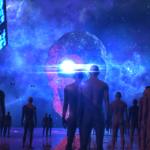This long-read piece follows on from my previous essay on 21st Century Rosicrucianism and was originally presented to the September 2020 virtual study group meeting of Metropolitan College, Societas Rosicruciana in Anglia.
I’m pleased to share it here now, understanding that it is by no means a comprehensive view of early Rosicrucian texts; nor is it an academic study of their historical context. I hope that you find it a useful contribution to your own path and daily practice.
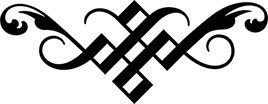
With my previous piece on 21st Century Rosicrucianism, I posited that we should see our work as a cycle of three activities: personal practice, social engagement and spiritual retreat. Today, I will be exploring the first of these in more detail; considering the different forms of practical work that fall under the umbrella of Rosicrucianism. By doing so, we can embolden our personal practice and continue moving forward with the confidence that our work is inherently transformative while also being authentically Rosicrucian in nature. Understanding what the core ethos and egregore of Rosicrucianism consists of also allows us to create stronger bonds with one another as we walk our many paths of individual spiritual destiny while being lifted along by the same currents of mystical air.
With this relatively brief talk, I hope to provide some guidance that maps out the general landscape of Rosicrucianism as a tradition while also giving an overall framework that might help us traverse it more readily. On the finer and more advanced details of what you might find along the way, I defer to the experience and wisdom of many here today who are true adepts. But by providing a contextualising framework of the practical paths of Rosicrucianism, the intention is to find a common ground in which we might meet and share our discoveries in a fruitful and productive way.
The Original Manifestos
Let’s begin, then, by taking a look at the three original pamphlets released in the early 17th century. Without delving into speculation about who might have written them and why: what practical paths do the manifestos speak of directly?
The Fama Fraternitatis gives us the lofty goal to “renew and reduce all Arts…to perfection”, and in practical terms tells us of the studies of Brother C. R. C. in “Mathematica, Physick [meaning Medicine], and Magic”, along with the ‘Cabala’ of Fez and the alchemical ‘transmutation of metals’. There is mention of a “magical language and writing, with a large dictionary, which we yet dayly use to God’s praise and glory”; ‘our ROTA’ (which, as an aside, Papus equates to TORA / TARO in his book The Tarot of the Bohemians); as well as the “discourse of secret and manifest philosophy”; ‘to cure the sick’; and the use of ‘two Sacraments’. There’s also the clear statement that they “[esteem] little the making of gold”, along with the admonishment that there are many books and pictures “under the name of Chymia” that are an insult to the glory of God. Perhaps most importantly, the Fama closes with the assertion that all those of like mind and temperament should write or speak such truth openly and from the heart.
In the Confessio Fraternitatis there is a further call to action. The Confessio again calls people to write and speak out – to create and distribute the means for a wider awakening – but here the continual study of Sacred Scripture is put forward as the sole, only and assiduous practice required of the aspirant. Not just in word, but also deed – making “the Bible the rule of their life, the end of all their studies, and the compendium of the universal world, from whom we require not that it should be continually in their mouth, but that they should appropriately apply its true interpretation to all ages of the world.” To achieve this, the Confessio calls us to read and understand the ‘great book of nature’ for which they “made for ourselves a new language, in which the nature of things is expressed” while again, in similar fashion to the Fama, admonishing the use of practical alchemy for profit in favour of a more compassionate and spiritual kind. It does offer a more nuanced view here than the Fama, though, in recognising that the search for the ‘tincture of metals’ is not inherently wrong, but that it tempts people away from walking the entirety of the path. Because in the end it is not enrichment, or status, or power that they seek – but human welfare; co-operation in the work of God; and the perfection of the arts through the steadfast observation of Nature (i.e. the macrocosmic Universe).
The Chemical Wedding of Christian Rosenkreutz
Which brings us to the third pamphlet released, almost certainly by the self-professed hand of Johann Andreae, entitled The Chemical Wedding of Christian Rosenkreutz. It’s worth noting that Andreae stated that this work was satirical in nature – and you can certainly see a thread of ostentatiousness that runs throughout; with its long asides to tell riddles, or parlour games played with dozens of virgins. However, to dismiss the piece as unimportant because of its satirical elements is to overlook the depth that it simultaneously displays. The Chemical Wedding is, by far, the most symbolically intricate of the three pamphlets; with allusions to black crows, white doves, Virgin guides, lions, unicorns, ceremonial rooms, ocean pearls, death, resurrection, Knights of the Golden Stone, holy nuptials and door-keeping. The alchemical allegory is clear and, even without diving into the deeper symbolism involved, ultimately looks at the journey of one man towards the centre of his being and the heights of royal attainment to be found in the soul.
Prayer and meditation, that is ‘humble and fervent’, form the backbone of practical work referenced; with a focus on consuming oneself with the thought and glory of God, yet to ‘reserve in silence’ that which is entrusted and ensure that it is committed to the ‘spreading of His name’. There is the criticism of those who would either represent themselves and their attainments dishonestly; or think too highly of themselves and thus lead to their own destruction. Of particular interest to our focus here today is the reference to the different paths that can be taken to the Royal Palace. There are offered to the aspirant four paths: one that is short, but dangerous; one that is long, but easy (as long as you stay on course); the third which is the Royal way, filled with pleasure and joy (but offered only to one in a thousand); and the fourth that cannot be completed except by ‘incorruptible bodys’. Although this doesn’t give us a direct steer on what the paths of Rosicrucianism are; it does provide some clarity on the choices available and the manner in which they are walked.
Towards the end of the text, there is an obligation made that helps us understand a few more areas of practical work that should be avoided: namely to “at no time ascribe your order either unto any Devil or Spirit, but only to God, your Creator, and His hand-maid Nature”; and that we “shall not be willing to live longer than God will have you.” Without getting too proscriptive, I guess that means the search for longevity and immortality might be out of the question; even though it is regularly found in the work of physical alchemists and part of the Universal Medicine referred to in the earlier manifestos. The first of these obligations also shows us that, although we might consider both alchemy and various forms of magic to be part of the Rosicrucian tradition, it is only when directed by and for God and Nature (rather than devils or spirits) that we serve our duties true.
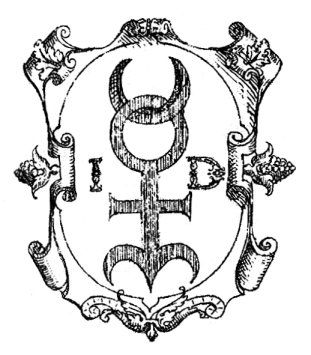
Contemporary Authors
Even though there might not be many direct instructions on practical paths in the original manifestos, it is clear that the founders of Rosicrucianism saw it as in line with Hermetic science and other strands of esotericism present at the time – particularly the resurgence of alchemy – but that it needed to be steadfastly aligned with a God-focused theurgic intent. This is proven effective by how strongly the publication of the pamphlets resonated and the flurry of activity that followed; with many commentaries and other manifestos circulated by numerous authors, often printed with one or more of the original documents themselves. We can also look to other key influences published immediately before the original manifestos were made public; that we can consider within the same milieu and part of the Rosicrucian ethos. When these things are combined with the content of the three manifestos, we begin to see a clearer picture of the practical paths of Rosicrucianism as envisaged at the time.
Before the publication of the original manifestos, Christian Alchemy was widely spread among the esoteric corridors of Europe. One of the first editions of the Confessio was published along with the Secretioris Philosophiae Consideratio brevis (A Consideration of the More Secret Philosophy) under the pseudonym Philipp à Gabella that was heavily influenced by and quotes substantial sections of John Dee’s Monas Hieroglyphica; which symbol also appears in the Chemical Wedding and links the tradition directly to this powerhouse of alchemy, astrology and angelic magic. At the same time as Dee, Giordano Bruno was espousing an esoteric theology that linked the consciousness of Man to Nature and the Divine through mathematics – a key component of the learnings of the legendary C. R. C.in the Fama – and was also developing a highly sophisticated form of Ars Memoriae: the art of memory.
Paracelsus is named directly in the Fama and his work on the microcosm and macrocosm; the quinta essential (soul of objects) and the role of Man as the ‘fifth substance’;alongside extensive efforts in medicine and both natural and astrological magick, are clearly one of the primary influences on Rosicrucianism. We can also thereby consider the important influence of Johannes Trithemius – who not only taught and mentored Paracelsus, but also Agrippa, and was extensively involved in the development of angelic magic and the use of magical languages; indeed it was one of his ciphers that was used in the infamous ‘Cipher Manuscript’ that created the Hermetic Order of the Golden Dawn. Immediately following the publication of the pamphlets we then have things such as the 10 publications released by Jakob Boehme between 1620 to his death in 1624, which solidified Christian Theosophy and the embodiment of the living Christ within; along with the notion of the ‘union of opposites’ that lies at the core of the Western esoteric tradition. Rosicrucianism was born in a time of seismic shifts in the esoteric landscape of Europe; both heavily inspired by the many influences surrounding it, while also highly influential to what was to come.
Among all of this excitement and hidden depths of esoteric knowledge, it is still important to recognise, though, that the most important practice to those who considered themselves Rosicrucians was Medicine. Then an evolving science that straddled disciplines, medicine (or Physick as it was often called then) sat between notions of the spiritual and physical components of mankind and spoke strongly to the concept of our shared duty towards the uplifting of humanity. There’s a reason why the first and foremost duty of the Rosicrucian is to ‘heal the sick, and that gratis’ as it was absolutely front and centre in importance (and controversy) at the time. Michael Maier in his Themis Aurea or Laws of the Fraternity of the Rosy Cross, published in 1618 a year after his landmark alchemical work Atalanta Fugiens, spends the first half of his book detailing the role of the Rosicrucians in the restoration of Medicine as an honourable practice that had fallen into disrepute. This notion of revitalising Medicine, similar to the work of Basil Valentine that was also popular at the time, admonishes the extravagances of the medical professions; which not only debased many of the things they were working with, but did so while overcharging and often outright deceiving their patients.
Overall, Maier shows us that the path of a Rosicrucian is an inherently practical one. Not just solely based on learning and reason, but on experiment and experience; on the transformative effect of practical work that can be witnessed and embodied rather than merely discussed or alluded to. While in today’s world Medicine has a clearly defined professional path, there is still something powerful in the worldview of the original Rosicrucians that we can learn from in how we approach our practical work today. This is primarily because there wasn’t as clear a distinction between material and spiritual alchemy – which was seen to incorporate not only medicine, but astronomy, chemistry, geology and many other natural sciences that were developing at the time. Indeed, unlike the post-Enlightenment world that divides material and spiritual pursuits – to the Rosicrucian they are forever intertwined.
Even though to a modern viewpoint it might seem that Rosicrucianism was just defending real science from the ravages of religious superstition (which, in many ways, it certainly was); it was also imparting the Hermetic notion that the spiritual subtleties involved have a very real impact on the success (or failure) of physical processes. This is partly because physical processes are an alchemical externalisation – a talismanic focal point – that enables the practitioner to be transformed through the cyclical nature of their material work; but it is also because the development of spiritual sensitivities allows for the occult qualities of material things to be perceived, in order that they can be properly maintained and worked without unknowingly altering (or destroying) their essence.
This notion of the combined work of physical and spiritual spheres is strengthened by other contemporary texts. Robert Fludd in his Apologia Compendiaria, published in 1616 in defense of the Rosicrucian Brotherhood, states plainly that the “spiritual and worldly secrets…may be accomplished…by the outpouring of the Holy Spirit in men…or by the revelation of the mysteries concealed in Nature, which also requires the assistance of the Spirit.” This is a common theme among early Rosicrucianism. The Speculum Sophicum Rhodo-Stauroticum (The Mirror of the Wisdom of the Rosicrucians), published in 1618 and often referred to as the ‘fourth manifesto’, has the idea directly on its title page with the references to ‘Ora’ and ‘Labora’ (Prayer and Work); alongside the balancing titles of ‘Physiologia’ and ‘Theologia’. The text itself tells us that faith, wisdom and study are the ‘true philosophy’ of the Rosicrucians and that we must “therefore hasten slowly. Pray, work and hope” alongwith the recognisable encouragement to ‘know thyself’ and ‘amend our ways and life’. All of this is encapsulated within the practice of alchemy as the primary path for the aspirant, but it still remains of great importance to be properly prepared to walk it; for as the text suggests: “whoever wishes to know the daughter of alchemical wisdom, resplendent in her brilliant white dress, should, before he sets out on this crystal sea, first train his eyes and prepare his strength for the struggles ahead”.
This preparation involves other, lesser Arcana that build up the aspirant’s concentration, willpower, intuition, visualisation and contemplative faculties to such an extent that the challenges found on the alchemical path can be overcome and the wisdom that it offers properly reconciled within the being of the aspirant themselves. Rather than forever remaining an external form of knowledge, the path becomes embodied and manifest through the transformation of the adept as both craftsman and tool. Following the hand of Divine Providence, through understanding things greater than just our immediate situation in the material world, is the path that unlocks the “lovely art and treasure house”.
Practical Rosicrucianism requires a combination of faith, intuition and wonderment at the miraculous nature of existence; while also needing the grounding principles of rationality, reason and observation to steer true. One or another of these will not suffice alone, but all need to be kept in balanced motion to achieve the alchemical and theurgic goals being sought.
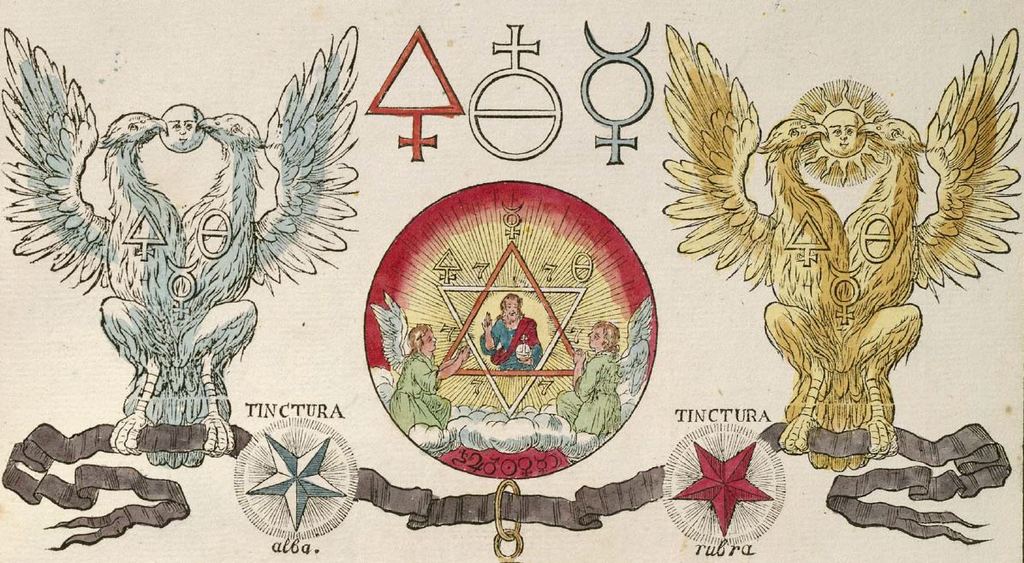
The Practical Paths of Rosicrucianism
What we find, then, is that at the core of Rosicrucianism is a Royal Art: the knowledge and understanding of the processes that develop the Universal Medicine (or Azoth per Basil Valentine’s text published in 1613) and the Philosopher’s Stone. This is the Great Work and transformation of the Adept, but it is heavily veiled in allegory and requires material, astral and divine components to be properly aligned and purified through ‘solve et coagula’: the cyclical process of drawing down Divine Will into the physical realm, while also sanctifying our own material form and intentions through contact with Divine Wisdom. Within this cycle of drawing down and rising up we can see that, when it comes to the day-to-day journey, there are many different steps to be taken; over many different types of terrain. Terrain that varies in order, distance and magnitude from individual to individual depending on their particular lot and location in manifested existence.
There is some added context to this developed in another early Rosicrucian text, the Ara Foederis Theraphici (Altar of the Theraphic Brotherhood) published in 1618, that explicitly highlights the importance of sharing the knowledge gained while on travels around the world; something that was mentioned as a central duty for the original Rosicrucian fratres of the Fama. No one person can obtain omniscience of the near infinite experiences and practical paths that the human condition has enabled to flourish in its relationship with Nature and the Divine. Sharing our discoveries with like-minded companions – working together towards the common goal of redemption – therefore becomes a key component of practical Rosicrucianism and part of our duty and terms of achievement.
The Ara Foederis also builds upon the alchemical emphasis of other early Rosicrucian texts by giving an indication that the primary goals were contemplative and theurgic, as opposed to the involvement of more occult practices. This is echoed in a Rosicrucian prayer by John Hendon, published in 1662, that strengthens the notion that the ultimate goal of Rosicrucianism was to allow the aspirant to properly receive, understand and embody the, as he called it, ‘Illuminating Spirit’ through obedience to God’s Will and a lifestyle properly aligned so as to ‘wound not my Conscience with vice’. This repeats the often found notion in the early texts, including all three of the original manifestos, that it is only through pure intention and an adequately virtuous life that the aspirant can reach the destination they are searching for. In this manner, one of the most powerful practical tools we have is prayer: an open adoration, communication and subservience to the presence of the Divine within our own beings and throughout all of Creation. Indeed, the rituals of the SRIA state at the outset that our aims will be accomplished by “prayer and perseverance in the paths of knowledge and virtue”.
In regards to magical workings, although not heavily present within the original manifestos it is widely considered a key component of the practical paths of Rosicrucianism. Returning to Maier’s Themis Aurea, he is a huge proponent of ‘magick’ as “the highest, most absolute and divinest knowledge of Natural Philosophy advanced in its wonderful works and operations”. Robert Fludd, in a letter of response printed in 1631 with the snarky sub-title The Squeesing of Parson Fosters Sponge, answers the assertion that all magic is evil (Diabolical) by asking: “As if there were not a natural Magic, by which Solomon did know all the mysteries in Nature, and the operations therefore; yea, as if the three wise Kings of the East did discover that the true King of the Jews was born by Diabolical Magic…were these three wise men Cacomagical Magicians…?” (Hoffman, 2001). Gabella in the Consideratio Brevis of 1615 reminds the reader of the importance of ‘geometry’, ‘mechanical magic’ and ‘cabbalistic expression’ which, with a broader view, we know are all central components of angelic magic.
While there might not be consensus on just how central a role assertive practices such as ceremonial magic should play, and there have certainly been many missteps in Rosicrucian history, there is a consistent recognition that, as long as the overall path is a restorative one that draws from the font of eternal inspiration and guidance available to us all, it can be considered a Rosicrucian one. This applies equally to any specific practice, on any of the four types of path outlined in the Chemical Wedding that the Rosicrucian might take. As Gabella also reminds us: “By the Will of God he is that most famous Mercury, he is the Microcosm, he is Adam”.
The final text that I want to consider today is perhaps the most famous outside of the original manifestos, primarily because of its beautiful and deeply meaningful emblems, and that is the compendium known as the Geheime Figuren der Rosenkreuzer (Secret Symbols of the Rosicrucians) published 1785-1788. We can see right from its title page where it states the compendium is for those “Practicing daily in the School of the Holy Ghost”. The numerous aphorisms inside its compiled pages all revolve around this notion; including “If a philosopher you wish to be, let only patience dwell in thee” and “the outer and the inner Mind, without God’s light you cannot find” while we “always watch the inner centre” and “look well for the golden magnet” to pick out just a few of the dozens of inspiring lines found throughout the collection.
What this pivotal text presents is the Christian Trinity of Father, Son and Holy Spirit; alongside the tri-une structure of God, Nature and Humanity; with the likewise ternary alchemical foundation of Sulphur, Mercury and Salt; the quaternary of the tetragrammaton and elements; pentagram of the magi; the hexagram of the cabalists; and septenary of the astrologers. There is no other volume that so readily gives us all the tools needed to understand the practical paths of Rosicrucianism as the Geheime Figuren.
This overarching and emergent structure forms the basis for almost all of the Rosicrucian orders that we know of, whether they be more focused on contemplative mysticism; or proponents of precise ceremonial or alchemical work. When combining this with the earlier texts of the 17th century we can see that there are, essentially, two grand paths of practical Rosicrucianism: Alchemy and Theurgy. Within each of these interrelated paths that dovetail like the snakes of the Caduceus, we have a number of different and more specific practices that could be considered. Under Alchemy, we have both medicine and chemistry; but also herbalism, astrology, natural magic and practical paths such as talismanic work or the art of memory; as well as the symbolic guide of the Major Arcana of the Tarot. Theurgy then consists of the more prayerful practices, whether contemplative or ecstatic, that are encapsulated by Kabbalah; angelic magic; meditation and prayer; guided by the Scriptures and Sacraments and fuelled by Faith, Hope and Charity. Underneath all of these terms, and others not mentioned, is a kaleidoscope of different advice on specific programmes of action; but they ultimately all return to those two grand paths: Alchemy and Theurgy.
These practices strengthen the physical, mental and astral components of the aspirant so that they can better understand and perform the operations referred to as the Great Arcanum. That secret doctrine of the Western Mystery Tradition which is inherently about the creative act itself; the formation of influence and construction that emerges from the source of all things, but is also present in its highest forms within the personality and consciousness of humanity in our physical materiality. It is our duty as Rosicrucians to align ourselves true in order to assist with the reintegration of material existence with the divine source; not just to escape the velocity of physicality or gain mastery over it for personal wealth, but to heal and restore the Universe to the former glory of the Heavenly Paradise present before the Fall.
To put it another way: Alchemy is working with the emergent substance of Material Form; Theurgy is our alignment to divinely inspired intelligence and intuition. Alchemy is the Act of Creation through Divine Will; Theurgy is the Sanctification found through Divine Wisdom; and in their Sacred Union lies the Redemption of Humanity and the Material Universe in Divine Love.
This is the practical path of Rosicrucianism, combining both Alchemy and Theurgy to ensure that the Great Arcanum is used for the Restoration of Creation to the Divine Glory of the Kingdom of Heaven.
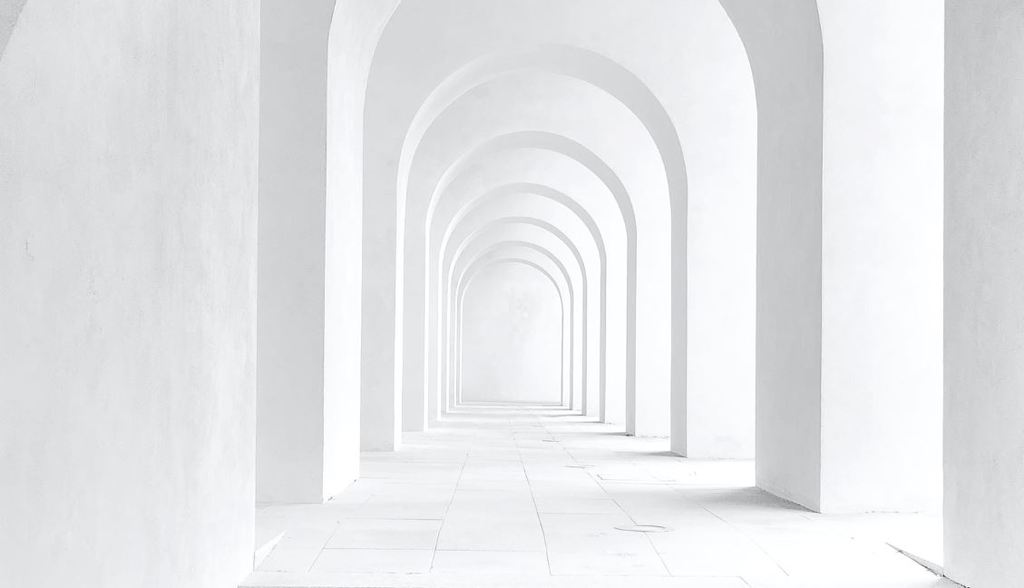
The Role of Rosicrucian Orders
When considering what this looks like in action, it is clear that part of the practice of Rosicrucianism is to find like-minded individuals and align ourselves towards the collective goal of spreading Light, Love, Truth and Peace (“united in heart and mind” as the Zelator ritual of the SRIA states). Indeed, the original pamphlets outright call for us to, as the Confessio says, “addict ourselves to the true philosophy, lead a worthy life, and dayly call, intreat, and invite many more unto our Fraternity.” Working, meeting, praying and walking the path together is embedded within Rosicrucianism and should be seen as vital to the practical paths of the tradition as they might be envisaged today.
Consider that, though you are often doing this work by yourself; you are not doing this work for yourself. The goals are universal, sacramental, sanctifying and communal, bringing us (as Waite states in his Way of Divine Union) to that “still, glorious and essential oneness, beyond the differentiation of persons, who are united in fruitful love, as in a calm and glorious unity…the crown and recompense of love made perfect in eternity” (Waite, 1915: p71). This contrasts with the scene in the Chemical Wedding in which “every one strove to reach the cord, and only hindred each other.” We can act in hindrance to one another and ourselves if we are all scrambling for achievement or possession of spiritual enlightenment without compassion or patience. In many ways, joining a Rosicrucian order can be a test of one’s progress as it provides a landscape in which to see where instinctual reactions lead you and how adept you are at noticing when you are veering off course.
Practical Rosicrucianism in the World Today
The practical paths of Rosicrucianism are not only roadmaps towards illumination of the divine, but also serve as training for the aspirant to help ensure strong spiritual, mental and physical foundations for the restorative task ahead. In today’s busy and distracting world, a large number of initiates have trouble with implementing regular practice into their daily lives; but by doing so consistently and purposefully, great strides are made and new avenues of understanding open up almost immediately. Discipline, willpower, intuitive capacity, creative ability and intellectual fortitude are all enhanced by undertaking these practices; which serves the aspirant well in not only achieving the heights of the steep ascent up the Holy Mountain, but also developing the ability to assist others and improve the world with the knowledge and understanding that they find there. In many ways, the practical path you choose is perhaps less important than the resolution and resilience to continue with it daily for long periods of time. The goal here is to make it your normal state of being, so that the lessons learned and experiences gained are fully integrated into your life as a focal point that enables Divine Will, guided by Divine Wisdom, to manifest within the material plane.
Rosicrucianism is not just something that you do; but rather something that you become. It is an all-encompassing experience of realisation of the Presence of God within (Theurgy) and the Emergence of God without (Alchemy), so that your actions move beyond the motivations of seeking attainment for self-gain and become the nourishment of a life lived in the Spirit. In this way, such practices are the motivator and the outcome alike: they sustain, inspire, enlighten, strengthen and embolden your existence as a praxis point for Divine Will; in sacred union with Divine Wisdom; so that the magical child might be born of Divine Love.
Rosicrucianism is not a tradition petrified in the stone of the past, to be studied and dissected, but is one in constant movement and effect in the world; filled with the living soul of our collective efforts and achievements today. God waits for us in the sanctuary of our inner selves that has always acted as a temple to the highest aspirations of humankind and meeting place for the most graceful servants of Divine Providence. For those who feel like this might be too difficult or time-consuming; understand that, though it is challenging and requires real commitment, the sanctuary is always open and ready for you. There is little resistance found once personal circumstances are aligned and the journey begins, or continues, except that which has built up in your own mind and surrounding dross of materiality. Another helpful image from A. E. Waite is worth holding here:
“…the door which opens inward is not so much a closed door as one that is always ajar; it is not so much ajar as open; it is not so much a door as a curtain; and indeed it is scarcely a curtain, for it is an arch rather, with a free space beyond.” (Waite, 1915: p234)
The archway is always there for you to step through; between the pillars, underneath the keystone, and into a communicative experience of collaboration with the Divine. Taking the first few steps is the hardest part; but you are a Rosicrucian and listening to the still voice within has brought you here. Which means that you have already heard the eternal call and, sooner or later – in the past, present, and future – walk the path you will.
Conclusion
The practical paths of Rosicrucianism relate to the creative act itself. Not just the final result; but a deeper understanding of the source of inspiration, how it emerges into consciousness and the ability for it to cross the threshold into material being. This is the simple truth, but it is not one that can be spoken of directly as it is experiential; yet universal and present in all things, animate and inanimate. The practice and embodiment of such a mystery is, of course, a more complex matter; but the path is a clear one. As a recently translated prayer from the 18th century mystic Karl von Eckartshausen states: “Love in knowledge is the good, and love in practice is the true”.
All of this ultimately speaks to the destiny of humanity and the crossroads we have arrived at, in which our ability to harness the power of creation has reached the point in which our future form will be dictated by the visions that emerge from within ourselves. It is more important than ever that we walk the path of Rosicrucianism with confidence; knowing that we will need to direct the holy centre that we discover towards the restoration of humanity before humanity loses itself to its own corrupted thought forms and self-generated destruction.
Creation takes many forms, both evolutionary and involutionary; spiritual and material; intellectual and emotional. Its flame flickers in the creation of beings and in their final moments of return. Its seed can be planted in others; and we in turn bear the fruits of those around us within our own hearts and minds. It can be the greatest force of progress and liberation; or give birth to the most horrific forms of oppression and destruction. Which is why the process of preparation is so important and the formation of the Universal Elixir requires not only a deep understanding of the wellspring of inspiration and how it can be wrought through the veil into material existence; but also needs the golden chain that connects us to the source of Divine Providence and enables the embodiment of the Highest Good: together known as the Philosopher’s Stone.
From the macrocosm to the microcosm, the Hand of God is present; but it is with the emergence of consciousness that it takes a more dynamic form. Within the sacred sanctuaries of our own being, guided by the source of Light, we can learn to experience the subtleties of the creative act – the filius sapientiae or ‘child of wisdom’ – and direct it towards specific inflections in space and time, even as they exist against the backdrop of eternity. There are many Arcana involved in this: but here you will find that silence and patience are your guide to wisdom and truth.
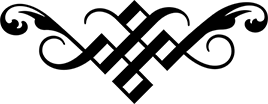
Bibliography
Hoffman, W.
2001, Western Esoteric Masters Series – Robert Fludd
McIntosh, C.
1997, The Rosicrucians: The History, Mythology, and Rituals of an Esoteric Order
Pagel, W.
1982, Paracelsus: An Introduction to Philosophical Medicine in the Era of the Renaissance (2nd Edition)
Papus
1896, The Tarot of the Bohemians
Waite, A. E.
1915, The Way of Divine Union
Waite, A. E.
1924, The Brotherhood of the Rosy Cross
Rosicrucian Pamphlets and other early writings were referenced through:
The Internet Archive: https://archive.org/
The Alchemy Website: https://www.alchemywebsite.com/
Waite, A. E.
1887, The Real History of the Rosicrucians
Philalethes, E.
1652, The Fame and Confession of the Fraternity R:C:
Geheime Figuren der Rosenkreuzer (high resolution scan):
http://digital.library.wisc.edu/1711.dl/HistSciTech.GeheimeFiguren
Karl von Eckartshausen prayer translated from German into English, August 2020:
https://theomagica.com/blog/on-the-rosicrucian-motto-of-true-and-good

